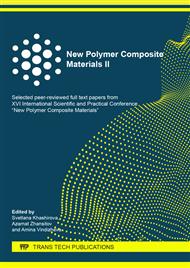p.375
p.382
p.388
p.394
p.400
p.408
p.413
p.419
p.424
The Modeling of Interfacial Contacts in Composites Using the Sitting Drop - Solid Body System as an Example
Abstract:
The paper presents an analysis of positions, which a theory of a liquid wetting a solid surface is based on, using the sitting drop equilibrium as an example. Certain inconsistencies are indicated in these positions, which is the subject of the discussion. The paper explains why the interfacial tension of solid-gas has no effect on the equilibrium of a drop. It proposes a mechanism to form a liquid-solid interface layer, the tensor of interfacial tensions of which is represented as a pressure tensor. It is established that the surface tension of the interface layer is variable and changes in magnitude and direction depending on the wetting conditions. It is determined that it is not possible to present a range of phenomena accompanying the wetting of a solid surface with a liquid by examining the equilibrium of a three-phase contact line.
Info:
Periodical:
Pages:
400-407
Citation:
Online since:
October 2020
Price:
Сopyright:
© 2020 Trans Tech Publications Ltd. All Rights Reserved
Share:
Citation:


